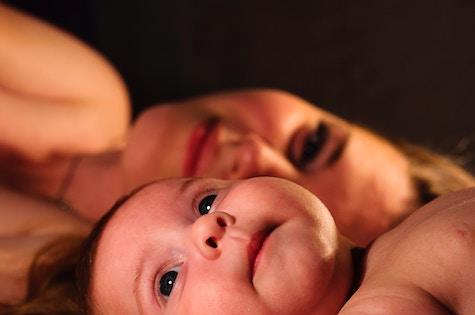Co-sleeping with your baby in your bed is still a popular way for new parents to get more shut eye, but the experts say it can be dangerous. While every parent is doing their best to manage the challenges of caring for a newborn, it’s important to understand the dangers of co-sleeping, the science behind these concerns, and what you can do to keep your baby safe while you all sleep.
What is co-sleeping?
Co-sleeping mostly refers to parents who sleep with their baby in their bed with them, which research suggests can be dangerous.
Red Nose Australia and Unicef UK both agree babies should sleep in their own space, usually in a cot or bassinet. Red Nose also says: "Some families choose to bring baby to bed with them, but this isn’t always safe.”
Why do parents co-sleep with their babies?
Breastfeeding a newborn is taxing on any new mum, and being able to roll over and feed your baby, then fall back to sleep can mean new parents get more sleep than if they have to get up to feed.
Plus, many parents believe co-sleeping helps their baby feel safe and comforted, while being able to feel their baby next to them can also help new parents feel at ease that their baby is OK. Unfortunately, this is not always the case.
What are the risks of co-sleeping?
“Sharing a sleep surface with a baby (co-sleeping or bed-sharing) can increase the risk of SIDS (SUDI) and a considerable proportion of SIDS occur on a shared sleeping surface,” says Red Nose Australia. Sadly, 3000 babies, toddlers and pre-schoolers die suddenly and unexpectedly each year in Australia.
Co-sleeping also increases the risk of fatal sleeping accidents such as your baby overheating or getting smothered by blankets.
Tips for safer co-sleeping
Red Nose Australia recommends these handy tips to make co-sleeping safer for your baby:
-
Always place your baby on their back to sleep, never on their tummy or side
-
Ensure your mattress is clean and firm
-
Keep pillows, duvets, blankets and bedding away from your baby so they can’t cover their face
-
Ensure your baby can’t fall off the bed. Some parents put their mattress on the floor to minimize this risk.
-
Move your bed away from the wall to ensure there are no small spaces between your bed and the wall for your baby to get stuck in.
-
Always place your baby on the side of one parent, and never between both parents, children or pets.
-
Dress your baby in a safe sleep bag with no hood (with gifted neck and arm holes) but do not swaddle your baby.
-
Tie up long hair, take off jewelry and remove teething necklaces so they don’t strangle your baby.
The bed you choose is important too
Soft, sagging beds put your baby at risk of rolling into you and overheating, or even worse, rolling off the edge of your bed. Soft, sagging mattresses also increase the risk of your covers becoming bunched in areas which is dangerous for your baby. A firm, flat mattress is the best solution if you plan to co-sleep.
If you do co-sleep, always follow these Red Nose six safe sleep recommendations:
-
Always put your baby to sleep on their back
-
Keep your baby's head and face uncovered
-
Keep your baby smoke-free, before and after birth
-
Create a safe sleeping environment, day and night
-
Put your baby to sleep in your room in a safe cot
-
Breastfeed baby (Breast feeding has been shown to be protective for SIDS by approximately 50% at all ages throughout infancy)
You should never co-sleep if:
-
You are very tired or feel unwell
-
You or your partner have drunk alcohol recently, even if you’re not drunk
-
You or your partner smoke at all, even if you don’t smoke in the bedroom. Research shows there is a much greater risk for SIDS if the mother smokes or if both parents smoke, and co-sleep.
-
You or your partner have taken any drugs that alter your awareness, including sleeping pills.
-
Your baby is unwell, was premature when they were born, or is small for their gestational age.
Most babies will end up co-sleeping with a parent at some point, but it’s important to understand the risks of this sleeping arrangement. Always follow the evidence-based recommendations by Red Nose Australia if you do co-sleep, and ensure you have a safe, firm and high quality bed if your baby is in it with you.








 Agree (0)
Agree (0) Disagree (
Disagree (









__small.png)










